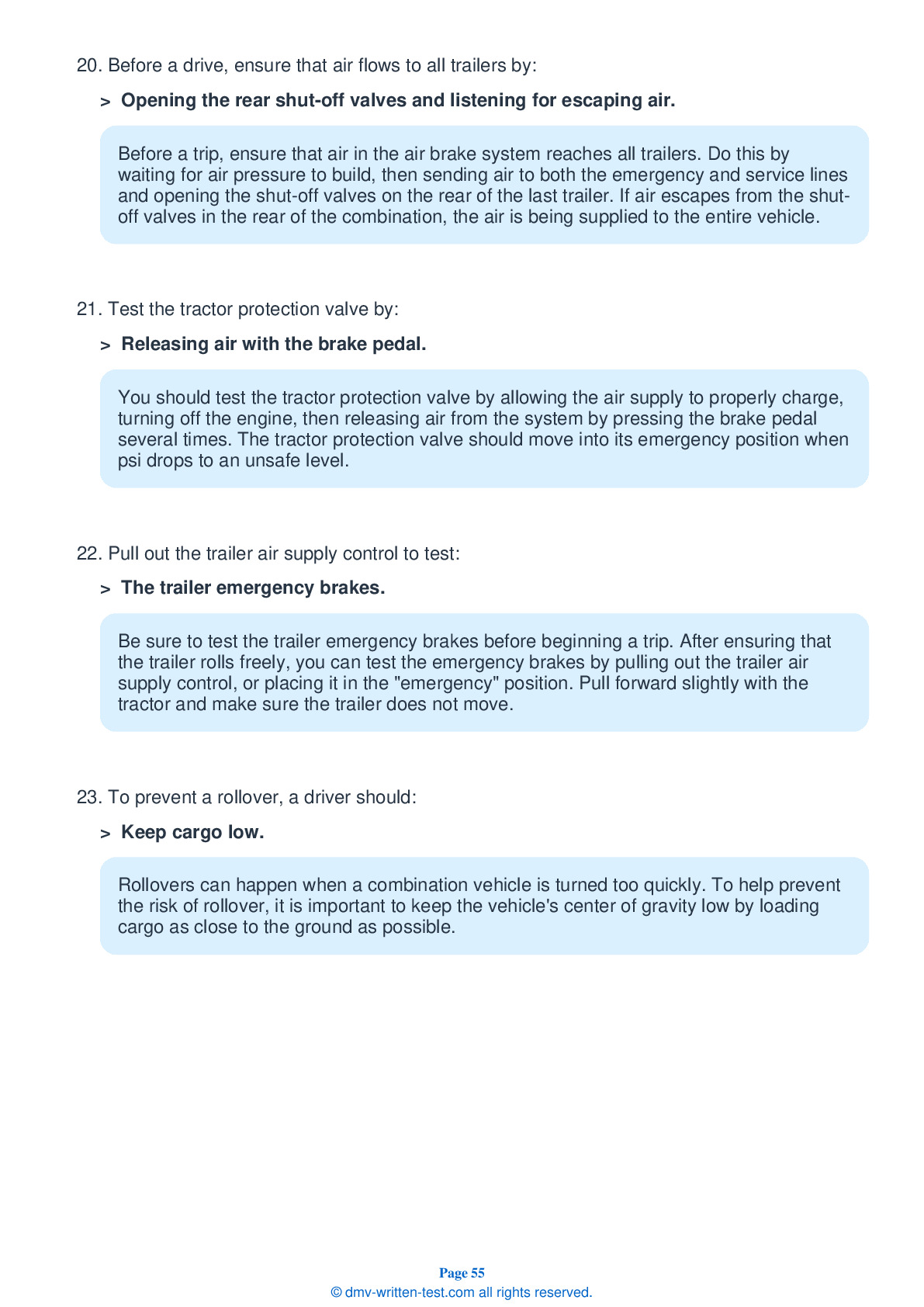Combination
All applicants who are applying for a Class A CDL should be prepared to take the Combination test. This test covers information found in Section 6 of the Minnesota Commercial Driver's Manual. Section 6 provides the information needed to safely operate tractor-trailers, doubles, triples, and straight trucks with trailers. The test is made up of 20 multiple-choice questions, and applicants will need to correctly answer a minimum of 16 questions to pass. The Combination test is not a replacement for the Double/Triple endorsement test.
Number of Question
Passing Score
15. The ____ trailer is the most likely to turn over if a driver takes a turn too quickly.
Explanation
When making a turn, be sure to steer gently and smoothly. Making a quick turn while pulling trailers is dangerous and can increase the risk of the last trailer rolling over.
16. The trailer hand valve should be used:
Explanation
The trailer hand valve, also called the trolley valve or Johnson bar, is used to work the trailer brakes. It should be used only to test the brakes. Using it while a vehicle is in motion could cause a skid.
17. What is a tractor protection valve?
Explanation
In a combination vehicle with air brakes, the tractor protection valve keeps air in the tractor or truck brake system in the event of the trailer breaking away or developing a leak.
18. When coupling a trailer:
Explanation
When coupling, make sure you couple matching glad hands. They are often color-coded to help drivers avoid mistakes. Typically, blue is used for service lines and red is used for emergency lines.
19. Before beginning a trip, you should:
Explanation
Before a trip, you should ensure that air reaches all air brakes on all trailers by opening up the rear emergency line and service line shut-off valves and listening for escaping air. Close both shut-off valves before beginning to drive.
20. In a vehicle equipped with an automatic tractor protection valve, the valve will pop out when air pressure drops to a level between:
Explanation




